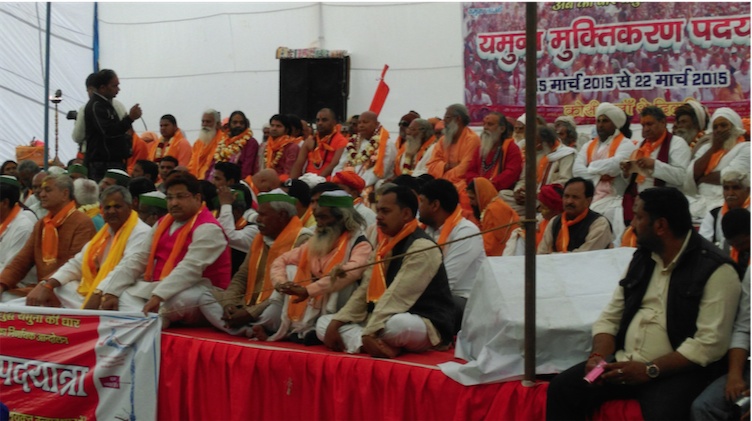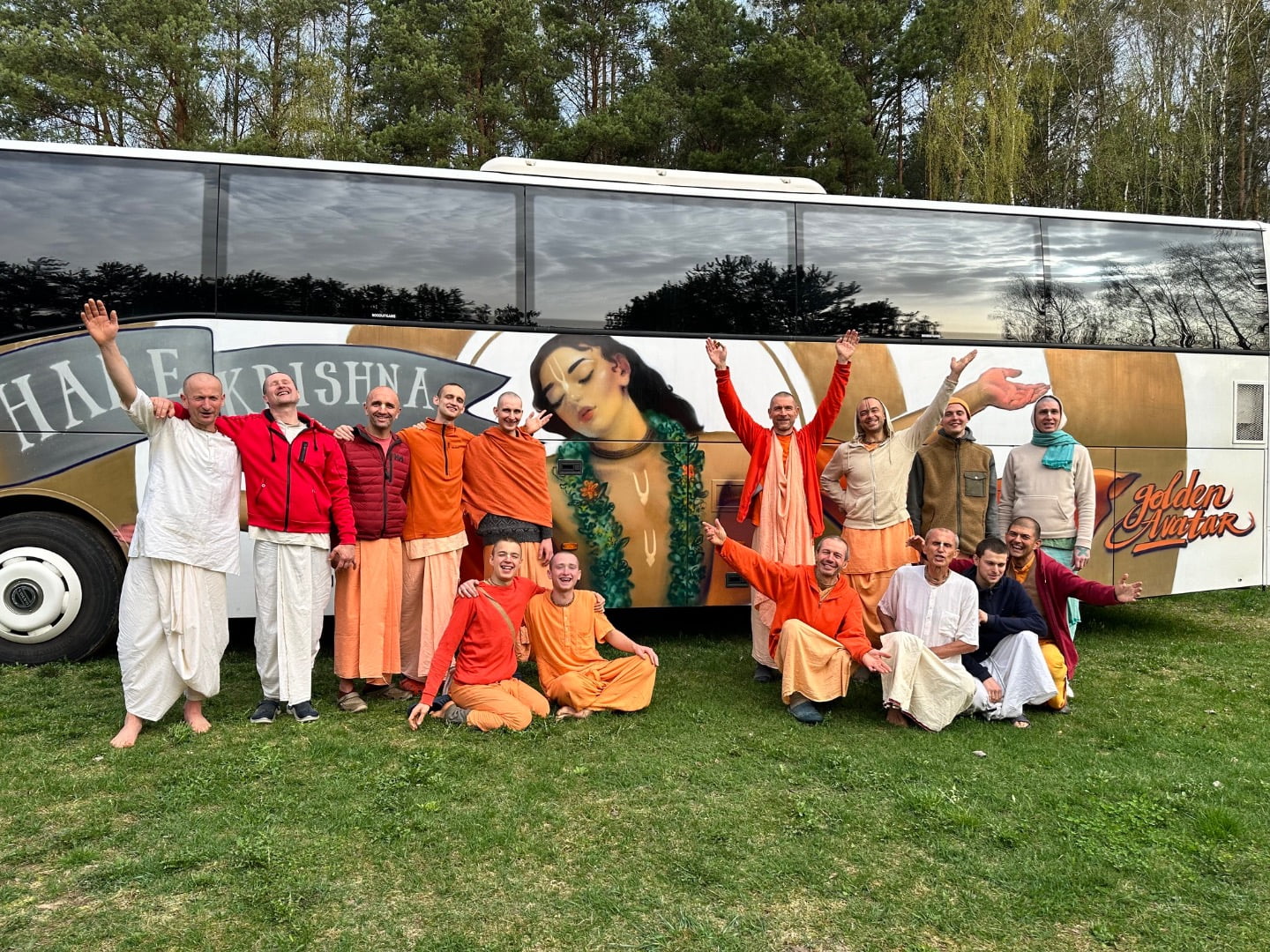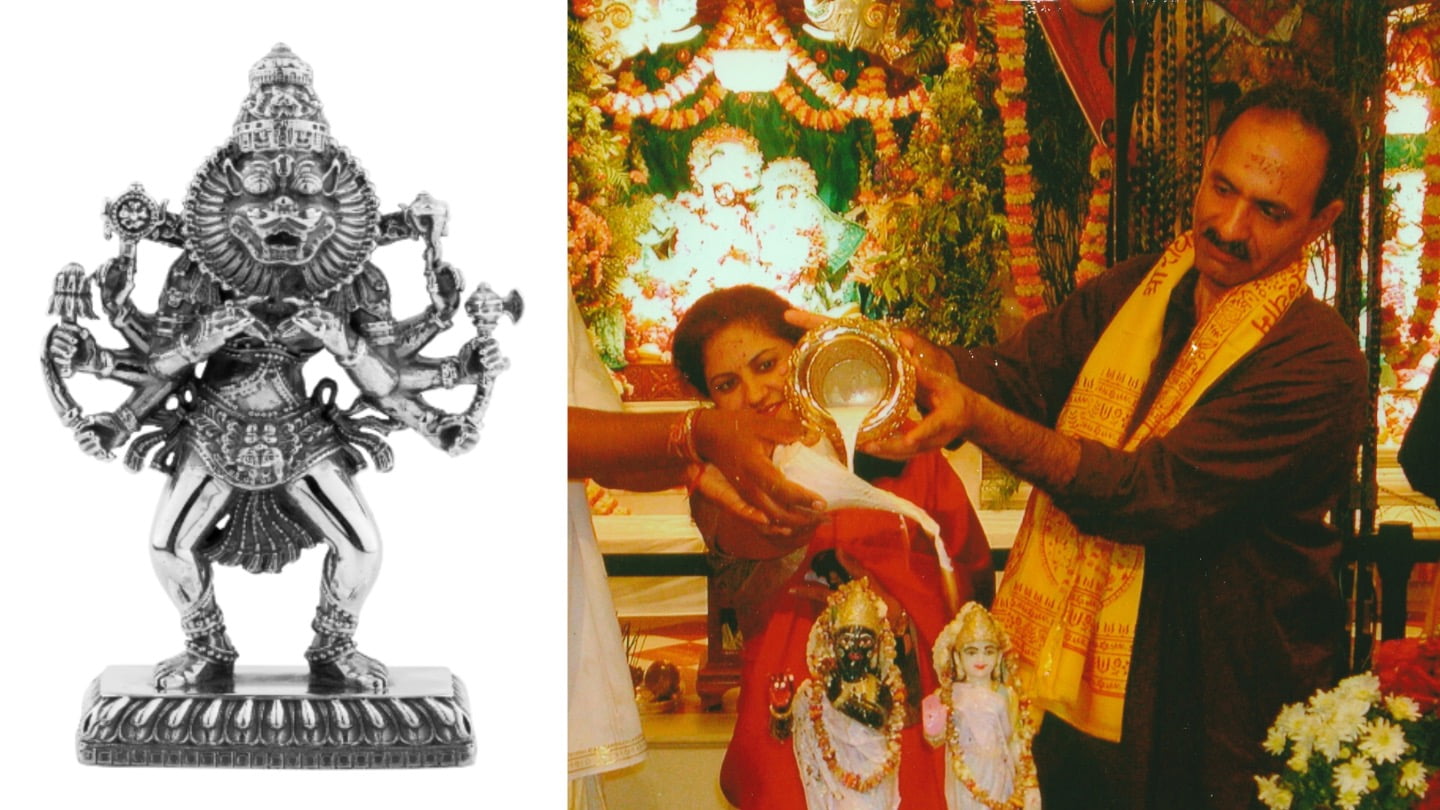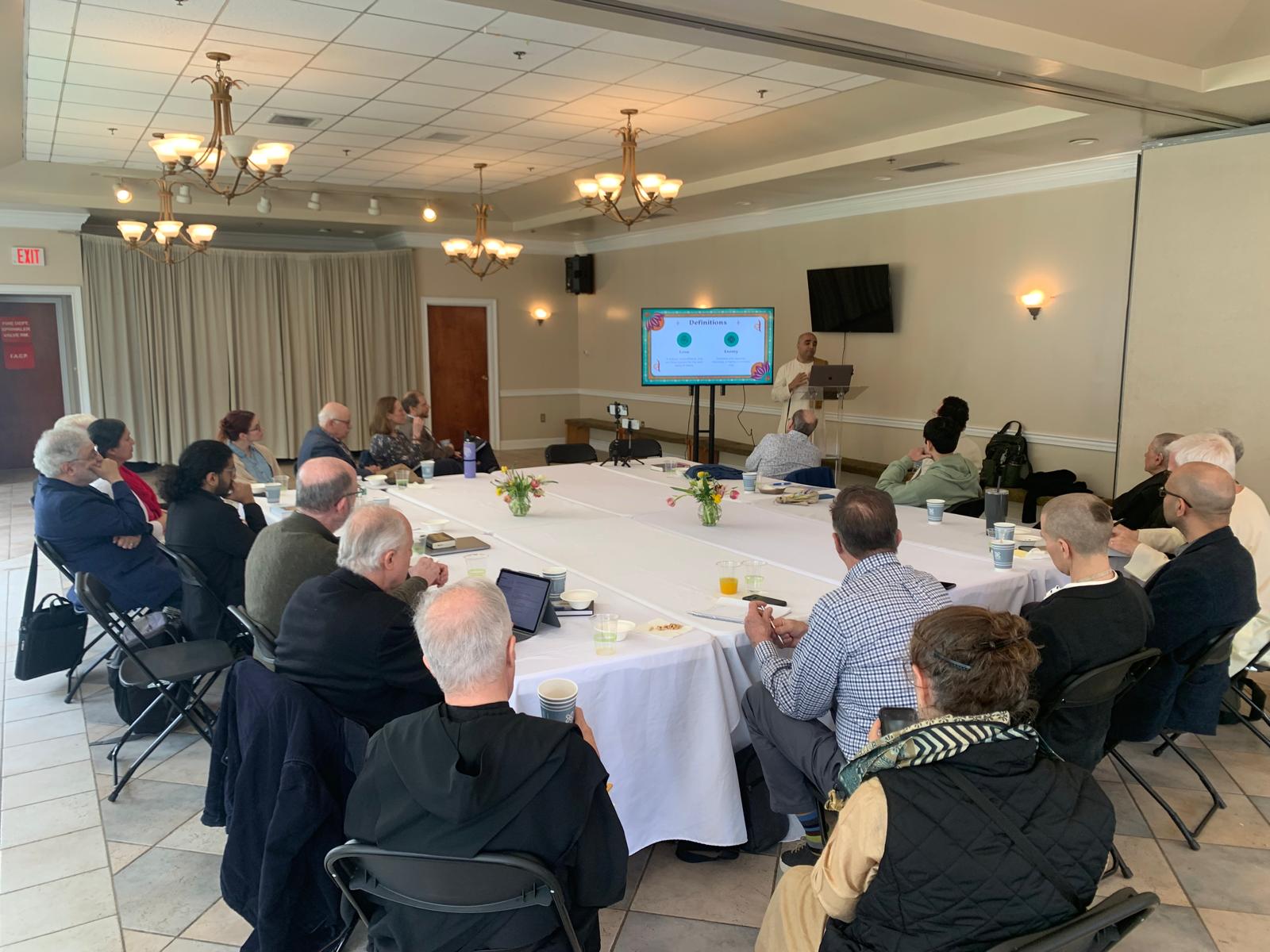Indian Government Agrees to Restore Yamuna River’s “Ecological Flow”
By Madhava Smullen | Mar 26, 2015

The Indian government has finally agreed to restore the Yamuna’s ecological flow through several steps demanded by protestors, beginning with bringing the sacred river under the Environment Protection Act within two to three months.
The move is a huge victory for the Free Yamuna Campaign of Braj (the land of Lord Krishna’s pastimes), which has been fighting for years now to restore the beleaguered river.
It is also a direct response to the Campaign’s third protest march since 2011, which was organized by sadhu and environmentalist Ramesh Babaji and his Maan Mandir organization; the Bharatiya Kisan Farmers’ Union; and the Pusti Marg sect of Vallabhacharya, whose main Deity is Yamuna Devi.
Over 20,000 people participated throughout the week-long Yamuna Muktikaran Padayatra (The “Free Yamuna” Foot March), which left Kosi in Braj on March 15th.
As well as members of the organizing sects, they included thousands of enthusiastic Brajbasis from Braj’s 1,200 villages, many revered saints of Vrindavan and Mathura, and members of several social, legal and commercial groups.
Residents of towns and villages along the way also participated as the Padayatra passed through with its horses and bullock carts displaying various tableaus of Braj Culture. Meanwhile several folk kirtan groups chanted the Lord’s names throughout.
Despite ill health, Sri Ramesh Babaji came and walked in the Padayatra, and elated all the participants with his uplifting spiritual discourse. Marchers braved heavy rains with single-minded determination, singing kirtan and honoring sumptuous prasadam to keep their spirits up.

Ramesh Baba (middle) walking at the Pada Yatra
Arriving in New Delhi on March 20th, the protestors staged a massive demonstration with some of Braj’s most respected sadhus, which was covered by both print and digital media.
“The roads of the capital had never seen such a huge gathering of Brajbasis and devotees singing kirtan and dancing like that,” says organizer Ravi Monga. “The police escorts were amazed and even joined in at times.”
Through March 20th and 21st, the protestors set up camp at the protest grounds of Jantar Mantar. When eleven sadhus embarked on a hunger strike, the media took the story up in a big way, and by late that night, a message came from the government that Minister of Home Affairs Rajnath Singh was ready to meet with the protestors.
The next day, a small delegation of four met with Singh, to present their demands.
The Free Yamuna Campaign has been raising awareness of the fact that all of the crystal clear waters that emerge at the Yamuna’s source in Yamunotri are diverted for agriculture and other uses at the Hathini Kund Barrage in Haryana. What’s left for the unknowing 80 million pilgrims and river bank residents who bathe and drink in the sacred river with faith and devotion every year is actually nothing more than a mixture of domestic sewage and industrial waste.

Brijbhasi children also have been actively participating in the protest march
As a result, according to a study conducted by the Energy and Resources Institute and supported by UNICEF, around 23% of children living beside the Yamuna River have high lead levels in their blood. And there are doubtless many other adverse health effects.
Thus the Free Yamuna Campaign representatives demanded that 1) the basic minimum ecological flow of fresh Yamuna water be released from the Hathini Kund Barrage and allowed to flow throughout the river’s entire stretch; and 2) that a parallel canal be built alongside the Yamuna to collect almost all sewage and divert it out of the Yamuna and into the Agra Canal.
According to Ravi Monga, these would free the river of most of its pollution.
Home Minister Singh, representing the Indian Government, agreed to implement these demands under the Environment (Protection) Act of 1986 and the Water (Prevention and Control of Pollution) Act of 1974. However he stated that a period of approximately two to three months would be realistically needed to do so.
After the meeting, a senior Cabinet minister visited the campground at Jantar Mantar and announced to the media and the public that the government had agreed to the demands and would implement them in the agreed-upon timeframe.
The protestors are floating on clouds.

The protesters reached Delhi on March 20th.
“According to the Free Yamuna Campaign mentor Sri Ramesh Babaji, a beloved saint of Braj, our Yamuna Padayatra has actually overcome Kali Yuga (the dark age) through its win,” says Ravi Monga. “He cited verses from the Skanda Purana that clearly state the Yamuna river will cease to exist after 5,000 years of Kali Yuga – which is right now.
“However, he quoted the Srimad Bhagavatam 1.18.8, which states that Kali Yuga loses its effects when faced with true devotees. Here, true devotees have defeated Kali Yuga.”
In returning the Yamuna river to Braj, Ravi says, the Indian government is rebuilding a 1,375 kilometer temple, and bringing back an inseparable part of Lord Krishna’s land that had been lost. It’s also saving an important aspect of Indian culture and spirituality, and a way of life that goes back for millennia.
Of course, they haven’t done it yet. And some in the Indian media are raising questions about whether the demands will really be implemented due to complications that previous agreements and further government bureaucracy may present.
What’s more, some say that taking water which was used for drinking and agriculture back from the Hathini Kund Barrage may cause a whole new set of disputes.
So a lot still remains to be seen. But millions of devotees and environmentalists the world over will be praying that the Yamuna river, once declared a dead river by the United Nations, is about to see a new dawn.
* * *
ISKCON devotees have also been actively involved in the Save Yamuna campaign. To help raising awareness, they participated in protest marches, signed petitions or organized special events worldwide. A feature documentary produced by ISKCON devotees about young Brijbhasis’ heroic efforts to save the Yamuna will be released this year at film festivals, in cinemas and on televisions worldwide. Click here to watch the film’s trailer:














